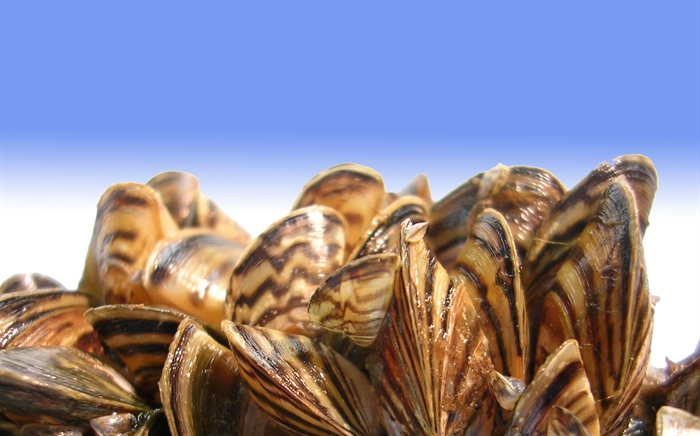
Image Credit: Chuck Poulsen
July 23, 2015 - 7:56 AM
The province is checking boats at provincial borders to check for the highly invasive zebra and quagga mussels.
This is a commendable proactive approach but I get the feeling it will be like trying to stop computer viruses at the border: Some are going to get in. With these mussels, it doesn’t take much for their party to get out of control.
(The Okanagan’s Don’t Move A Mussel program should get recognition for a great brand name).
If the mussels do arrive, we may need to look at biological science for control. More on that in a bit but for now, stop hyperventilating, eco-warriors.
The mussels Invaded Lake Winnipeg in 2013. They are heading west and have shown up in California.
So how bad are these lousy little mollusks?
Zebras, about the size of a finger nail, can produce as many as one million eggs per year. They clump together and cover rock, metal, rubber, wood, docks, boat hulls, native mussels, aquatic plants and Donald Trump’s hair.
They clog water intakes, impact fish and mess up aquatic ecosystems. Economic impact of the mussels in North America during the next decade is expected to be in the billions.
In just the Okanagan, a study estimated that it would cost more than $43 million a year to just manage them.
These mussels are originally from Europe. Most of the organisms that are natural enemies in Europe are not found in North America. The mussels just laugh at our natural organisms and tell them fuddle-bubble off.

Image Credit: 100thmeridiam.org
So let’s go to the chemistry lab to find mussel enemies.
* Last year, Manitoba used liquid fertilizer in a harbour. That test was said to be successful. But hold on, aren’t we supposed to keep fertilizer out of our lakes? Wouldn’t that be a feast for our milfoil? Remember when milfoil and cigar boats arrived like the plague and never left?
* Here’s a strange one: Serotonin, the chemical that makes us sleep, was applied to the mussels in the Great Lakes. Serotonin overrides the mussels’ natural cues so the eggs and sperm get active at the wrong time. It’s had some success but its effect on marine life and the people will be further studied, after the scientists wake up.
* The favourite may be Zequanox. It’s made from dead cells of a naturally occurring microbe (pseudomonas, caufluorescens). That’s two long words for a bacterium. Once ingested, Zequanox kills the mussels by attacking their digestive tract. Unlike chlorine, which the mussels recognize as a threat and shut their valves to guard against, they slurp up the Zequanox.
The product is said to be highly selective i.e., other marine life – fish, plants, ducks, clams and insects - won’t bother with it.
It’s approved by the Environmental Protection Agency in the U.S. and has shown 100 per cent zebra mortality in areas in which it’s been tested, such as Christmas Lake in Minnesota, where it was used along with a copper treatment and the fertilizer potash.
No doubt, any non-mechanical approach needs to be cautious.
Look at how the misis shrimp experiment in Lake Okanagan turned out.
— Chuck Poulsen can be reached at poulsenc30@hotmail.com.
News from © iNFOnews, 2015